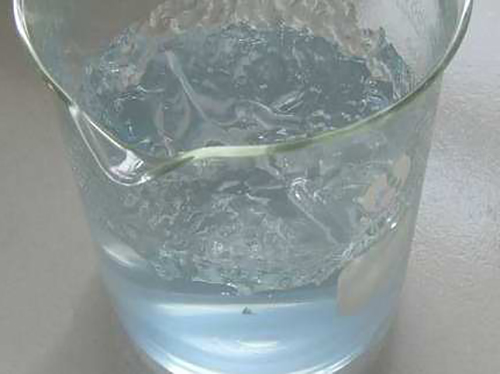Synthesis and Applications of Cross-Linked Polyacrylamide in Various Industries
Cross-Linked Polyacrylamide A Versatile Polymer with Diverse Applications
Cross-linked polyacrylamide (CLPA) is a synthetic polymer that has gained significant attention in various fields due to its unique physical and chemical properties. This versatile material is formed by the polymerization of acrylamide monomers in the presence of a cross-linking agent. The resulting three-dimensional network structure imparts distinct characteristics to the polyacrylamide, making it suitable for a wide array of applications, including biomedicine, environmental science, and materials engineering.
One of the most notable features of cross-linked polyacrylamide is its ability to swell and absorb large amounts of water. This property is attributed to the hydrophilic nature of the polymer chains, which consist of amide groups that can form hydrogen bonds with water molecules. The swelling capacity makes CLPA an ideal candidate for use in hydrogels, which have become increasingly popular in drug delivery systems and tissue engineering. In these applications, hydrogels can provide a controlled release of therapeutic agents, facilitating localized treatment and reducing systemic side effects.
Cross-Linked Polyacrylamide A Versatile Polymer with Diverse Applications
In the realm of environmental science, cross-linked polyacrylamide has emerged as an effective tool in soil stabilization and erosion control. When applied to soil, CLPA can enhance its ability to retain moisture, reduce runoff, and improve plant growth by providing a favorable environment for root development. Moreover, CLPA has been utilized in wastewater treatment processes. Its hydrophilic nature allows it to effectively capture and remove suspended particles and pollutants from water, thus contributing to cleaner and safer water sources.
cross linked polyacrylamide

The utility of cross-linked polyacrylamide is not limited to healthcare and environmental applications. In materials engineering, this polymer is often used as a superabsorbent material in products such as diapers and adult incontinence products. The water-retaining capabilities of CLPA ensure that these products remain dry on the surface while effectively absorbing liquids. Furthermore, its flexibility allows it to be incorporated into various other industrial applications, including the manufacturing of coatings, adhesives, and encapsulation materials.
The synthesis of cross-linked polyacrylamide can be tailored to meet specific requirements by modifying the type and concentration of the cross-linking agent and the conditions of polymerization. Common cross-linkers include N,N'-methylenebisacrylamide (MBA), which enables the control of the degree of cross-linking and, consequently, the physical properties of the polymer. Researchers continue to explore novel approaches to improve the functionality of CLPA, such as adding bioactive components to enhance its performance in biomedical applications or incorporating biodegradable elements to address environmental concerns.
Despite its many advantages, there are challenges associated with the use of cross-linked polyacrylamide, particularly concerning its long-term stability and potential toxicity. While the polymer is generally considered safe, the residual acrylamide from the polymerization process can pose risks. Thus, ongoing research aims to develop safer synthesis methods and investigate alternative materials that retain the beneficial properties of CLPA while reducing health and environmental risks.
In conclusion, cross-linked polyacrylamide is a polymer with diverse applications across multiple fields, including biomedicine, environmental science, and materials engineering. Its unique properties, such as high water absorption capacity and biocompatibility, are paving the way for innovative solutions to modern challenges. As research progresses, advancements in cross-linked polyacrylamide synthesis and application methodologies will unearth even greater potential for this remarkable polymer, making it an essential material in science and industry.
-
lk-319-special-scale-and-corrosion-inhibitor-for-steel-plants-advanced-solutions-for-industrial-water-systemsNewsAug.22,2025
-
flocculant-water-treatment-essential-chemical-solutions-for-purification-processesNewsAug.22,2025
-
isothiazolinones-versatile-microbial-control-agents-for-industrial-and-consumer-applicationsNewsAug.22,2025
-
scale-inhibitor-key-solutions-for-water-system-scale-preventionNewsAug.22,2025
-
organophosphonates-versatile-scale-inhibitors-for-industrial-water-systemsNewsAug.22,2025
-
scale-and-corrosion-inhibitor-essential-chemical-solutions-for-water-system-maintenanceNewsAug.22,2025





